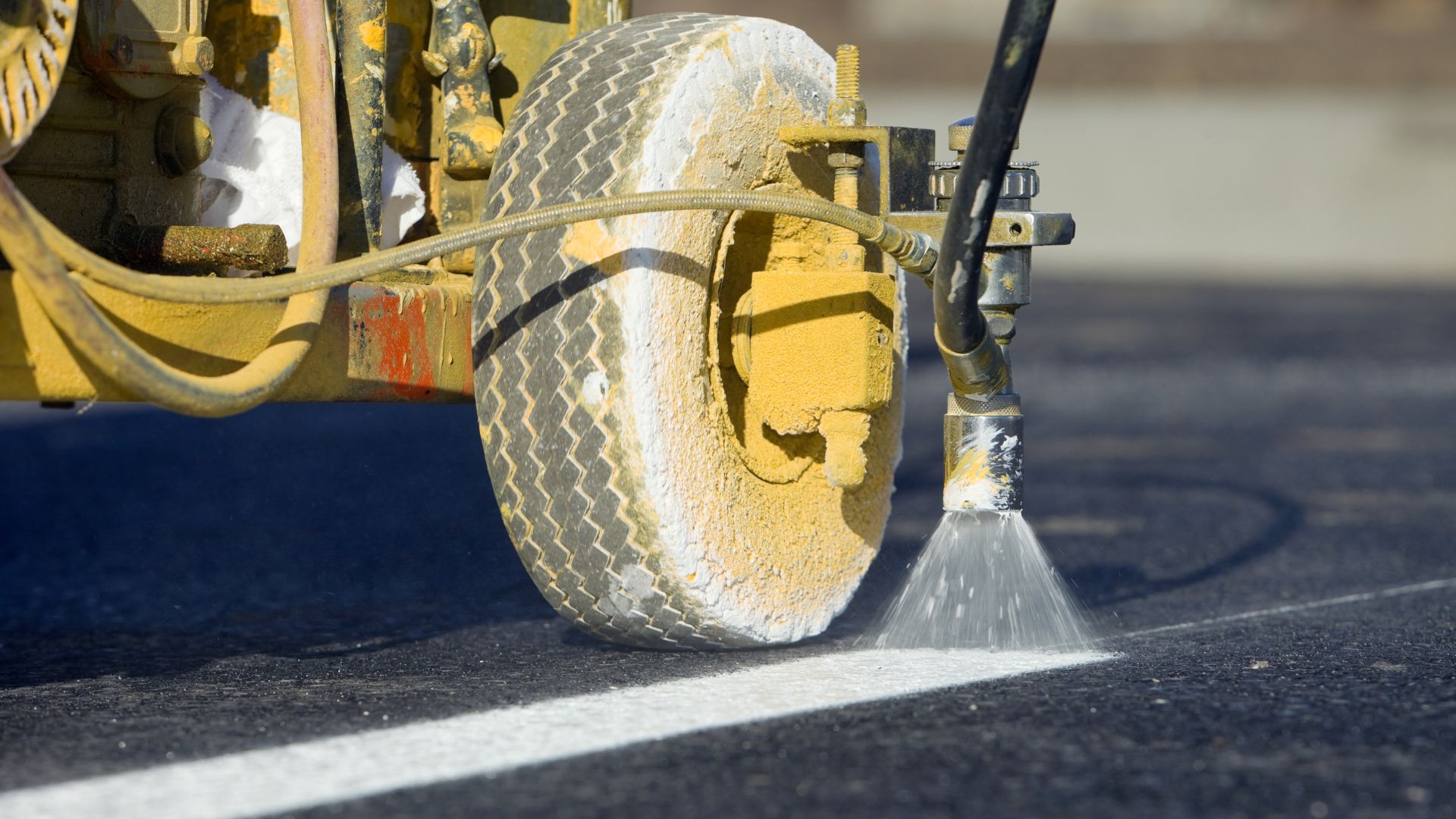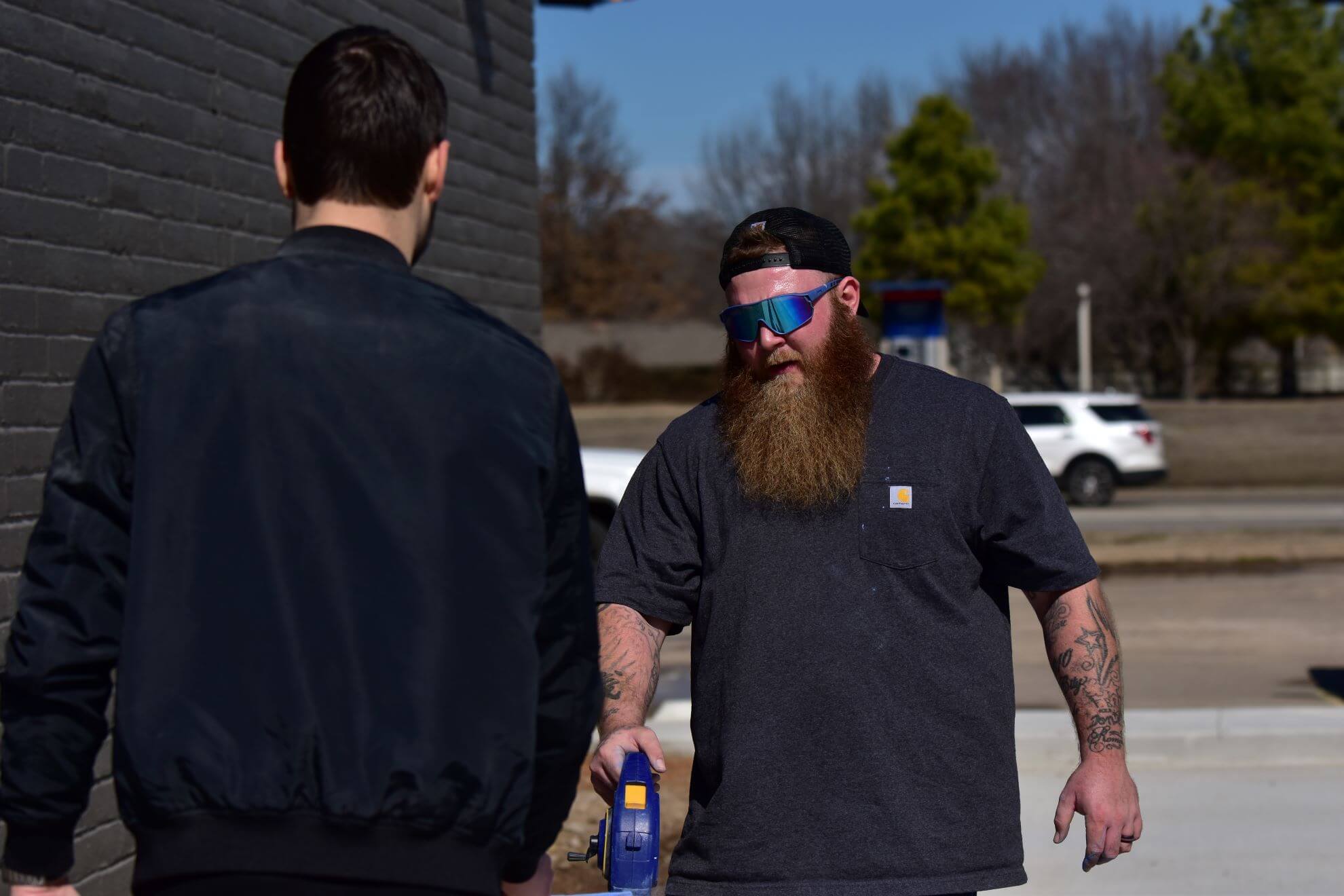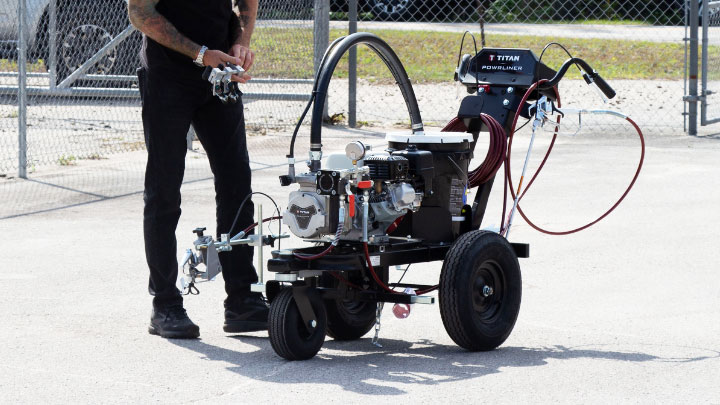
3 Mistakes People Make When Starting a Line Striping Business
If you’re thinking about starting a line striping business, you’re on the right track. It’s one of the most in-demand services in the pavement maintenance industry, and the barriers to

The result? Crooked, inconsistent, and uneven lines. Wasted paint. Unhappy customers. And a whole lot of frustration.
Practicing with your line striping machine before you ever step foot on a job site is one of the most important steps you can take to build a solid foundation. In this post, we’re breaking down exactly how to do that, using tips straight from the field.
You wouldn’t jump in a car for the first time and head straight onto the freeway, right? Operating a line striping machine isn’t much different. There’s a learning curve, and skipping the basics almost always ends in disaster.
Before you ever apply paint, you should be comfortable with:
These are muscle memory skills. You don’t learn them by watching videos—you learn them by practicing, and practicing the right way.
A simple, cost-effective way to train with your line striping machine is by filling it with water instead of paint. Water runs through the system without damaging it, and it lets you simulate the real process without the mess or expense.
Here’s how to do it:
Water won’t have the same thickness as paint, but it’s enough to help you dial in control, pressure, and movement.
Whether you’re restriping or laying out new lines, chalk lines are your best friend.
During practice, pop a chalk line down your surface and use that as your guide. It helps reinforce the discipline of staying straight and identifying when you’re drifting.
Some contractors even tape both sides of the line to simulate boundaries. This is especially helpful when you’re training with paint later—since overspray will show up instantly if you miss your mark.
Want to level up? Companies like Same Day Stencils offer reusable stencil guides that go directly over lines, allowing you to practice with paint while controlling overspray.
In the video example we analyzed, a new team member was trained using a Titan PowrLiner 850, which is a lightweight, compact line striping machine—ideal for beginners. Once they became comfortable with the controls and movement, they moved on to a Graco 3400, a more robust striping unit.
This is a smart progression strategy:
Here are a few fundamentals every striper—beginner or pro—should lock in during practice:
Inconsistent starting points = inconsistent lines. Always position your gun over the start of the line before pulling the trigger. Back up if needed.
Wavy lines look unprofessional. Even a small deviation can ruin a restripe job or throw off a new layout. Use your chalk lines, stencils, or existing lines to stay centered.
Don’t coast to a stop or lift the gun early. Your line ends should be crisp and aligned—especially in rows of parking stalls.
One of the best pieces of advice from the field: slow is smooth, and smooth is fast. You’re not being judged on how quickly you can stripe a lot—you’re being judged on how good it looks when you’re done.
Take your time during practice, make small adjustments, and don’t be afraid to stop and try again. It’s better to mess up with water than mess up on a paid job with real paint.
If you’re serious about getting into striping or want to sharpen your skills with a line striping machine, we highly recommend the How to Stripe Course. It walks you through everything from equipment setup to restripes to full layouts.
Until then, grab your machine, fill it with water, and start practicing. Your future customers—and your bottom line—will thank you.

If you’re thinking about starting a line striping business, you’re on the right track. It’s one of the most in-demand services in the pavement maintenance industry, and the barriers to

If you’re in the parking lot striping business or planning to get started, choosing the right equipment can make or break your productivity. In this post, we’re diving into the